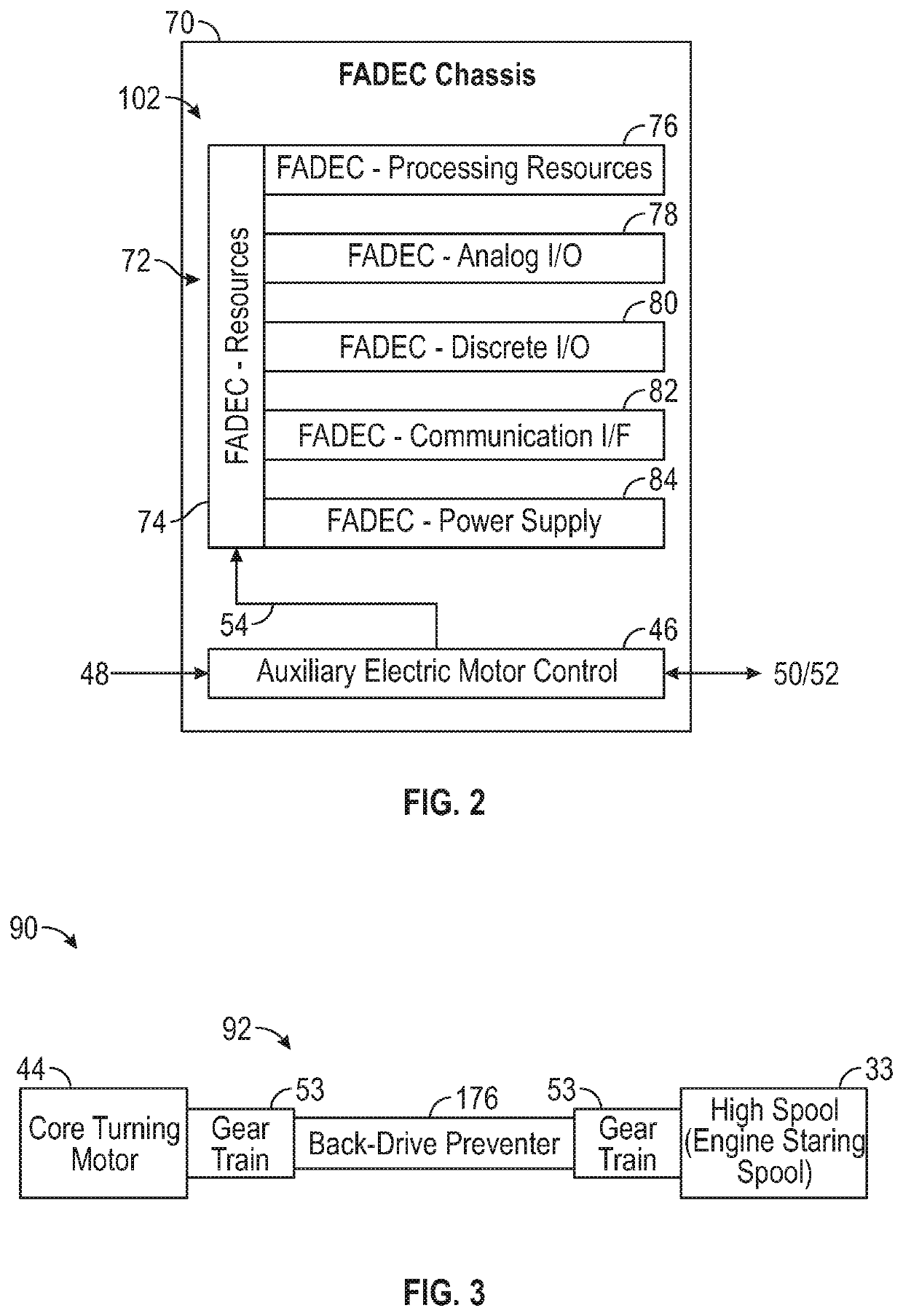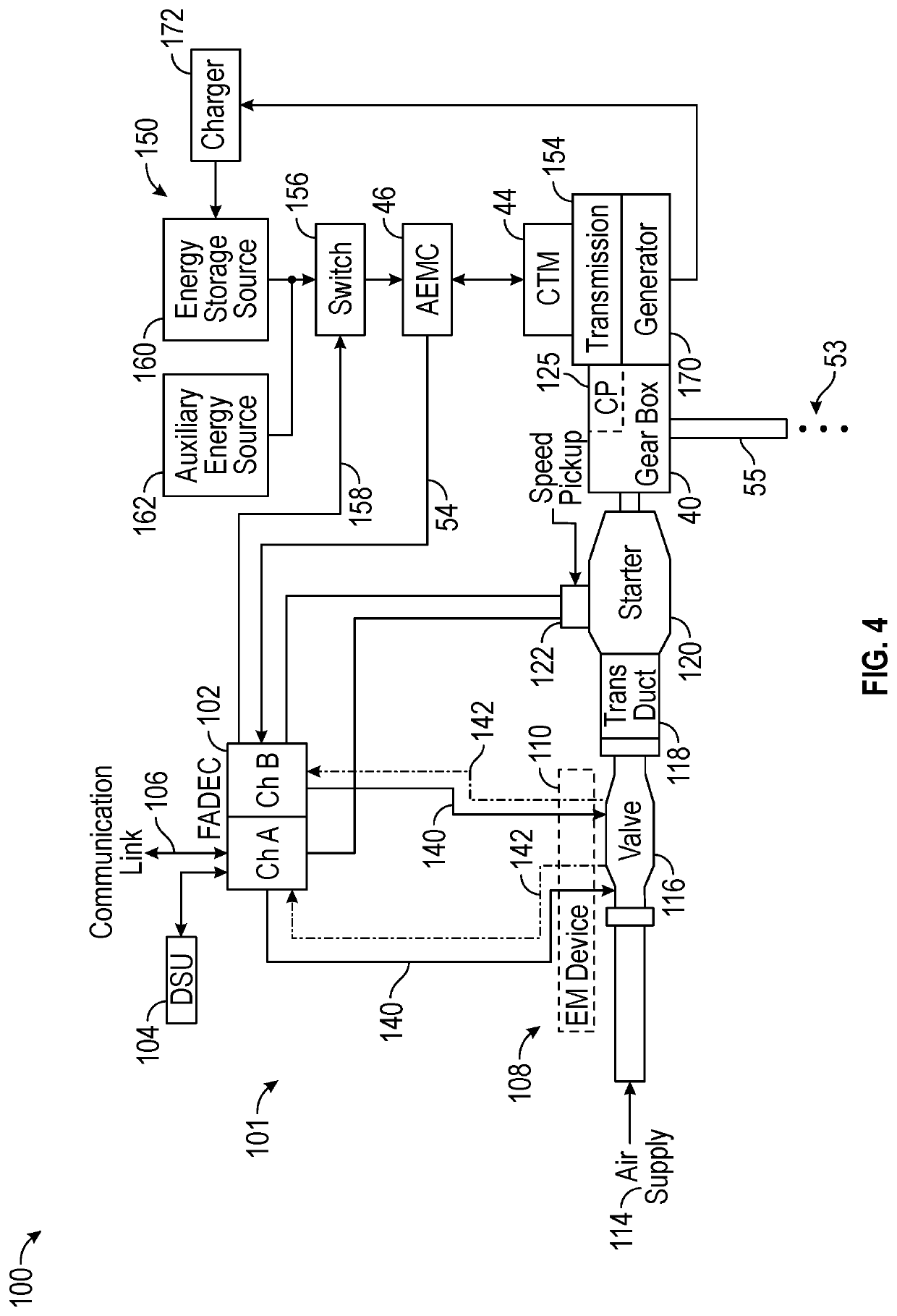Low-power bowed rotor prevention system
a rotor and low-power technology, applied in the direction of efficient propulsion technologies, machines/engines, engine starters, etc., can solve the problems of undesirable engine restart or engine start, “bowed rotor” condition
- Summary
- Abstract
- Description
- Claims
- Application Information
AI Technical Summary
Benefits of technology
Problems solved by technology
Method used
Image
Examples
Embodiment Construction
[0031]Various embodiments of the present disclosure are related to bowed rotor prevention in a gas turbine engine. Embodiments prevent a bowed rotor condition by using a core turning motor to drive rotation of the gas turbine engine under low power conditions. Embodiments use an auxiliary electric motor control (AEMC) to drive a core turning motor (CTM) to prevent a bowed rotor condition of the gas turbine engine based on aircraft power. The AEMC can isolate power requirements from a full authority digital engine control (FADEC) that controls operation of the gas turbine engine, such that the FADEC need not be fully operational and powered while the AEMC controls the CTM. The AEMC can be operable to monitor the duration of engine core rotation and report a pass / fail status, for instance, upon a subsequent engine start process performed by the FADEC. Embodiments consume less than 500 watts of power by the AEMC and the CTM combined while performing core turning (i.e., bowed rotor prev...
PUM
 Login to View More
Login to View More Abstract
Description
Claims
Application Information
 Login to View More
Login to View More - R&D
- Intellectual Property
- Life Sciences
- Materials
- Tech Scout
- Unparalleled Data Quality
- Higher Quality Content
- 60% Fewer Hallucinations
Browse by: Latest US Patents, China's latest patents, Technical Efficacy Thesaurus, Application Domain, Technology Topic, Popular Technical Reports.
© 2025 PatSnap. All rights reserved.Legal|Privacy policy|Modern Slavery Act Transparency Statement|Sitemap|About US| Contact US: help@patsnap.com



